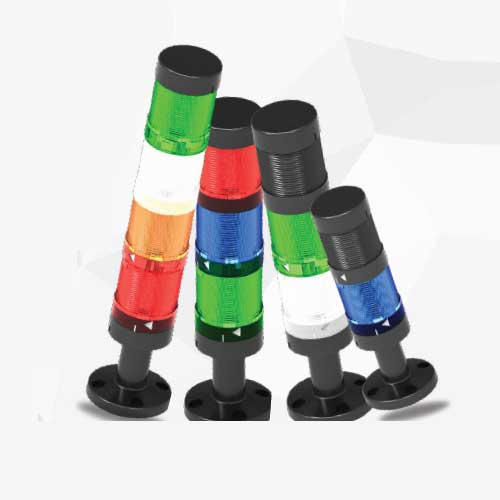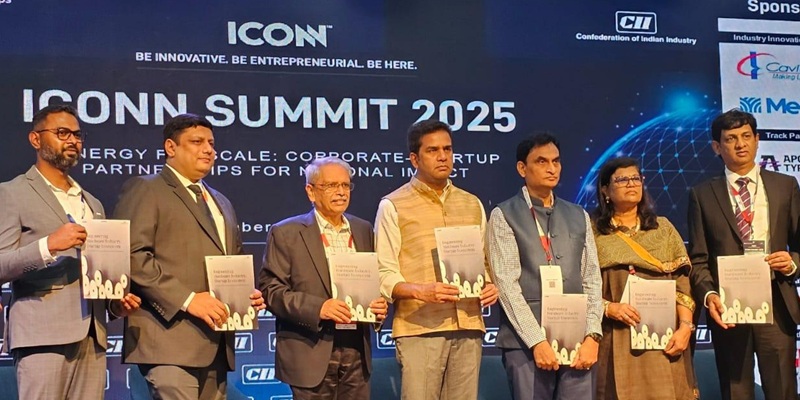Schedule a Call Back
Smart, green features gaining traction in HVAC market
 Industry News
Industry News- Sep 01,22

Rising disposable income and purchasing power of the consumers along with rising investment towards infrastructural development and construction of various residential and commercial facilities is propelling the growth of the HVAC (heating, ventilation, and air conditioning) market in India. According to BlueWeave Consulting, India HVAC market – which was estimated at $ 8.6 billion in 2021 – is projected to reach $ 21.5 billion by 2028, growing at a CAGR of 14.80% in the forecast period. The integration of advanced technologies such as Internet of Things (IoT) is also offering significant growth opportunities to the Indian HVAC market.
Back to basics
HVAC is a system of maintaining and controlling the temperature, humidity, and purity of the air of a room or enclosed space. These systems are used in a wide range of commercial, residential, and industrial facilities such as family homes, apartments, hotels, hospitals, trains, airplanes, ships, etc. Ventilation is a very important aspect of HVAC as it helps in maintaining indoor air quality which involves the removal of moisture, odours, smoke, dust, temperature control, and oxygen replenishment.
Based on offering, the India HVAC market is segmented into equipment and services. While the equipment segment is further classified into healing, furnaces, boilers, chillers, air cleaners, etc; the services segment is classified into installation, up-gradation/replacement, maintenance, repair, consulting, etc. The equipment segment accounts for the largest market share of HVAC market and is mostly in demand among the residential segment due to its cost-effectiveness. Furthermore, the integration of advanced technologies is also propelling the demand for HVAC equipment in the market.
The residential segment accounts for the largest market share owing to the increasing disposable income of Indian consumers and changing lifestyles. Due to this, the demand for the installation of HVAC appliances and systems in small houses is surging. However, the commercial segment is projected to witness the highest growth rate during the forecast period owing to the rising construction of commercial facilities such as offices, shopping complexes, hotels, etc., in the country.
Geographically, North region dominates the India HVAC market and is likely to dominate the market in the forecast period as well. The varying climatic conditions witnessed by states in this region act as a major driving factor for the market. High altitude regions such as Jammu and Kashmir, Himachal Pradesh, Uttarakhand, etc., have a high demand for heating appliances. However, states and union territories in northern plains such as Delhi, Uttar Pradesh, Bihar, etc., demand different types of heating and cooling appliances.
Competitive landscape
The leading market players in the Indian HVAC market are Carrier Midea India Private Limited, Carrier Airconditioning & Refrigeration Ltd, Daikin Industries Ltd, Mitsubishi Electric Corporation, LG Electronics Inc, Fujitsu Limited, Panasonic Corporation, Blue Star Limited, Havells India Limited, Voltas Limited, Johnson Controls-Hitachi Air Conditioning India Limited, and other prominent players.
The market is highly competitive with the presence of various global and regional industry participants. The companies constantly launch new products with advanced features to gain a competitive edge over the market. Multinational corporations also invest in expanding their production capacities to meet the growing demand and boost their market penetration. Furthermore, the adoption of competitive strategies such as partnerships, mergers, acquisitions, joint ventures, etc, is also prominent in this market.
Recently, Daikin India has announced the setting up of its third research and development centre in India with an investment of Rs 500 crore at Neemrama (Rajasthan). The R&D centre will be operational from 2023.
Restraints and growth drivers
The sudden outbreak of COVID-19 negatively impacted the growth of the Indian HVAC market. The nationwide lockdown imposed by the government to curb the virus spread restricted the manufacturing and supply of non-essential items including HVAC equipment. Furthermore, the construction of residential, commercial, and industrial facilities was halted due to lockdown guidelines and lack of investment. The purchasing power of the consumers was also affected owing to the economic crisis in the country. All these factors resulted in a significant drop in the demand for HVAC systems in India, impacting the overall market growth.
India is an extremely price-sensitive market and even the slightest high price in any industry, including HVAC, can harshly impact the market growth. According to an article published on Howtodiscuss, the minimum cost of HVAC installation in India is around Rs 40,000 per piece and can go up to Rs 300,000. Along with the installation cost, the customers also had to bear annual maintenance and repair costs which are around Rs 10-15k per year. This acts as a major restraining factor for market growth.
Some of the key growth drivers of the market are:
Rising focus towards energy-efficient systems: The HVAC system is an energy-efficient solution, which proves to be economical as well in the long run. Several HVAC equipment are designed in a way to put less burden on energy consumption. For instance, the installation of Variable Frequency Drive (VFDs) for air blower modulation will subsequently reduce the energy consumption at part load operations. Furthermore, the installation of 2-way or 3-way valves will modulate chilled water flow as per indoor environmental conditions which reduce the load on the chiller.
Expanding integration of advanced technologies: The HVAC system is increasingly getting innovated and is being integrated with advanced technologies such as the Internet of Things (IoT) and artificial intelligence (AI). The integration of sensors and IoT into HVAC is allowing consumers to attain maximum efficiency. Through these sensors, the HVAC system can communicate and share data as well as process it to operate more efficiently and drive optimal efficiency across a range of products. This is anticipated to present lucrative growth opportunities to the Indian HVAC market in the forecast period.
Courtesy: BlueWeave Consulting and Grand View Research
Varied climatic conditions and the need to maintain an ambient environment in a building is a key trend that is expected to impact the market over the forecast period. In recent times, the availability of smart features and energy efficiency have been key purchase criteria for HVAC systems and the trend is expected to gain traction over the next few years. As a result, the HVAC industry is gradually shifting focus on energy efficiency. Green initiatives are the focus area for several OEMs with an emphasis on saving money while reducing greenhouse emissions. Therefore, over the recent years, there has been a shift toward eco-friendly HVAC units. This includes products that consume less power and operate on renewable sources of energy thereby reducing energy costs.
As such over the last few years the use of geothermal cooling and heating equipment has been on a rise, subsequently reducing dependence on fuel-based equipment. Customer inclination towards comfort is creating avenues for growth. To meet the demand OEMs are developing products that are not just energy-efficient but also incorporate the latest technologies offering better connectivity. Today buildings constructed are “green” resulting in an increase in installations of thermostats, sensors, and smart meters that can be controlled from a smartphone or PC. The software enabled HVAC systems are also trending, and are expected to create opportunities over the forecast period. Technology is slowly making in-roads in the HVAC field, creating favorable long-term growth avenues.
The cooling segment dominated the market for HVAC systems and accounted for the largest revenue share of 54.7% in 2021. According to the data published by the International Energy Agency (IEA), cooling accounts for over 10% of the world’s electricity consumption. The statistics are huge and probably explain why the cooling segment has dominated the HVAC equipment market over the years. Apart from cooling, heating is also a major segment exhibiting gradual growth over the years. The heating segment over the long term is projected to gain traction as the market gradually transitions from a fuel-based working model to efficient low-carbon solutions. Further, the proliferation of solar-based heat pumps will also create avenues for segment growth over the forecast period.
Courtesy: Grand View Research
Related Stories

Balancing sustainability and compliance in pharma industry with HVAC solutions
HVAC systems account for more than 50 per cent of total energy consumption in cleanrooms. Kishor Patil of Trane Technologies explores how energy-efficient HVAC systems can help pharmaceutical compan..
Read more
MAHLE launches bionics to optimise noise in air conditioning systems
The bionic radial blower sits in front of the evaporator and makes the design of the air conditioner symmetrical and narrow. This creates more space for other components, a crucial advantage especia..
Read more
Industrialisation and urbanisation drive the HVAC market in India
HVAC (Heating, Ventilation, and Air Conditioning) systems are vital for creating and maintaining optimal work environments, while playing a key role in environmental responsibility.
Read moreRelated Products

Engine Cooling Fan
Khodiyar Automotive Pvt Ltd offers a wide range of engine cooling fan.

Industrial Tower Lights
Esbee
Electrotech LLP offers a wide range of industrial tower lights.

Cross Flow Cooling Tower
World Cooling Towers offers a wide range of cross flow cooling tower.
















